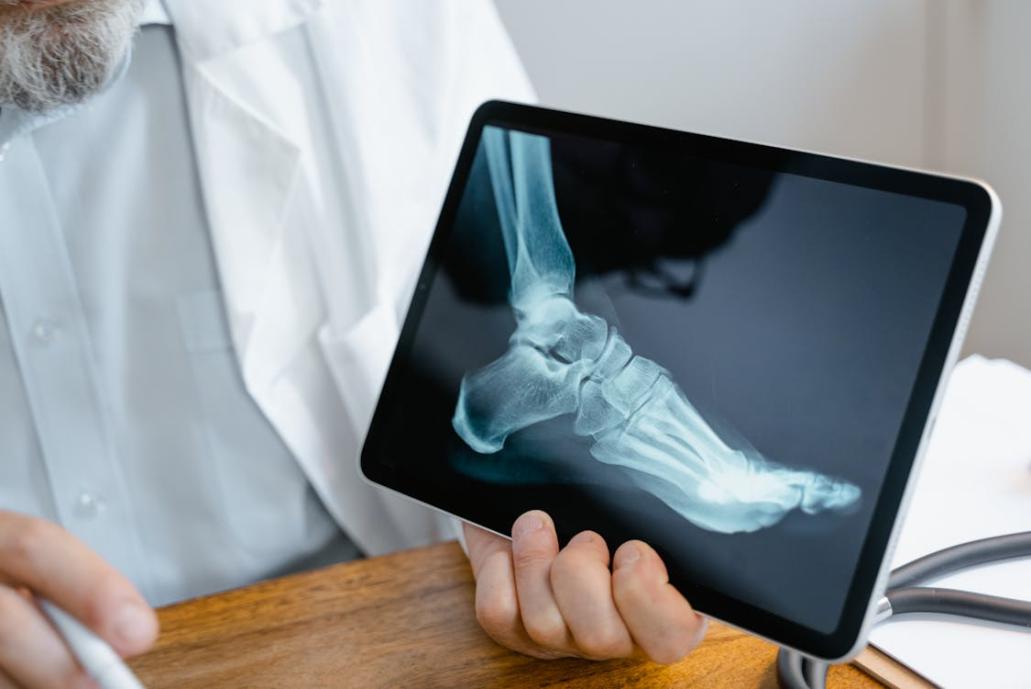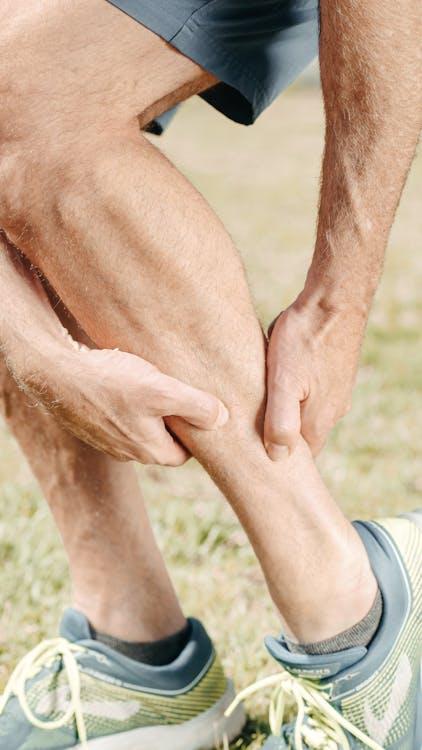You twist your ankle, overdo it at the gym, or wake up with that familiar ache in your lower back. What follows—swelling, stiffness, maybe even heat around the area—might feel frustrating, but it’s actually your body doing its job. That’s inflammation.
Inflammation is part of your body’s natural defense system. It kicks in to protect and repair tissue after an injury, a strain, or even in response to chronic stress. While it’s often painted as a “bad thing,” inflammation itself isn’t the enemy; it’s the way your body heals. The real challenge is understanding when inflammation is helping you recover… and when it’s signaling that something deeper might be wrong.
In this blog, we’ll break down the science behind inflammation and injury, explore the difference between healing and harmful inflammation, and give you practical, no-nonsense strategies to support your recovery, whether you’re dealing with tendinitis, bursitis, back pain, or something more complex. Because knowing how your body works is the first step to helping it heal well.
What Is Inflammation?
Inflammation gets a bad reputation. We hear it associated with pain, swelling, and chronic illness, and while those can be true, the real story is much more nuanced.
At its core, inflammation is your body’s built-in alarm system. It’s how your immune system responds to damage, whether from an injury, infection, or overuse. When something’s wrong, your body sends white blood cells, fluids, and proteins to the affected area to start the repair process. That’s what causes the redness, warmth, and swelling you often see.
There are two main types of inflammation:
- Acute inflammationhappens quickly, usually within hours of an injury. It’s your body’s fast-response team and typically goes away as healing progresses. Think of it as helpful, short-term swelling and pain after a twisted ankle or sore muscle.
- Chronic inflammation, on the other hand, sticks around. It can be low-level and persistent, sometimes even invisible, and is often linked to long-term conditions such as arthritis, autoimmune disorders, or repeated strain on joints and soft tissue. Unlike the acute kind, chronic inflammation can wear your body down over time instead of helping it recover.
Understanding the type of inflammation you’re dealing with is essential. Not all inflammation needs to be “fought”. Sometimes, it just needs to be respected and managed properly. And when it lingers or interferes with your day-to-day life, that’s when it may be time to slow down, rest, and consider professional support.

Read more on how desk jobs can cause long term damage and how to prevent it
Inflammation and Injury: What Happens in the Body
When you sprain your ankle, tweak your shoulder, or pull a muscle, your body reacts almost instantly. What you’re feeling, i.e., the pain, heat, and swelling, is inflammation in action. It’s not random discomfort; it’s the result of a finely tuned biological process designed to help you heal.
Let’s say you trip and land awkwardly on your wrist. Within minutes, blood vessels in the area expand to allow immune cells, nutrients, and repair proteins to flood the injury site. This increased blood flow is what causes the area to feel warm and look red. White blood cells move in to clear damaged tissue and begin repairs. At the same time, fluid leaks into the tissues, causing swelling and stiffness that can limit movement and protect the injured area from further harm.
This sequence plays out across a wide range of common injuries. For example:
- An ankle spraincauses ligaments to stretch or tear, triggering inflammation that makes walking painful but also signals the body to begin rebuilding those fibers.
- Shoulder tendinitis, often caused by overuse or repetitive motion, leads to swelling in the tendon. The area becomes irritated, painful, and harder to move, especially during lifting or overhead activity.
- Lower back strainfrom lifting something heavy or sitting with poor posture for long periods can inflame muscles and surrounding soft tissues. You may not notice it right away, but the stiffness and dull ache that show up the next day? That’s inflammation doing its thing.
- Knee bursitisresults from inflammation of the bursae—fluid-filled sacs that cushion your joints. This often occurs after kneeling for long periods or from direct impact, and the area may appear puffy, sore, and warm to the touch.
- Even carpal tunnel syndrome, caused by compression of the median nerve, often begins with inflammation that builds slowly over time from repetitive typing, texting, or tool use.

In these cases, inflammation is a protective measure. It creates the conditions your body needs to start the healing process. But it also comes with trade-offs such as reduced mobility, localized pain, and pressure, which can make it difficult to work, focus, or go about your routine.
Most importantly, inflammation isn’t just a response to major injuries. Even low-grade strains or repetitive stress injuries can trigger an inflammatory reaction. If left unaddressed, that short-term defense system can turn into long-term dysfunction.
The key is to listen to your body early. Swelling, stiffness, and pain are more than just inconveniences; they’re signs that your body is asking for rest, support, or in some cases, medical guidance.
From Injury to Condition: When Inflammation Becomes Long-Term
Most acute injuries resolve with time, rest, and care. But when inflammation keeps coming back or never fully goes away, it can evolve into a chronic condition. This is often the case with musculoskeletal issues like tendinitis, bursitis, or lower back pain, especially when repetitive strain or poor posture are involved.
Unlike a sudden injury, these conditions build slowly. You might ignore them at first—just a little soreness after work or a tightness that loosens up by lunchtime. But over time, unresolved inflammation starts to wear down tissue, limit mobility, and increase the risk of long-term damage.
The takeaway? Inflammation isn’t just part of healing; it’s also your body’s early warning system. Paying attention before discomfort becomes dysfunction is one of the best ways to protect your long-term health.
Diagnosing Inflammation-Related Injuries
Inflammation can be obvious—like a swollen ankle or an aching shoulder—but it can also be sneaky. Low-grade inflammation often builds up over time, especially in musculoskeletal conditions caused by repetitive stress or poor posture. That’s why a proper diagnosis is important, especially if the pain keeps returning or starts to interfere with your daily life.
Healthcare providers typically begin with a physical exam and a discussion of your symptoms: When did the pain start? What makes it worse? Are there certain movements you’re avoiding? From there, they may recommend further testing to confirm what’s going on beneath the surface.
Depending on the case, diagnosis might involve:
- X-rays or MRIs, to rule out fractures, disc problems, or joint damage
- Ultrasound, to detect soft tissue inflammation in tendons or bursae
- Blood tests, in cases where autoimmune or systemic inflammation is suspected (such as rheumatoid arthritis)
Once the source of inflammation is identified, whether it’s tendinitis, bursitis, or another issue, the goal is to reduce pain, restore function, and prevent the condition from becoming chronic.
For many people, especially those in physically demanding jobs, recovery may require temporary changes to work duties or time away from their role entirely. In these cases, a doctor’s note for work or a medical certificate for leave provides official documentation that supports the need for rest and reduces the pressure to return too soon.
Taking that step isn’t about exaggerating your condition; it’s about creating the space your body needs to actually heal.

Treatment Options: From R.I.C.E. to Active Recovery
Once inflammation is diagnosed, treatment often begins with tried-and-true basics. For decades, the RICE method for injury—Rest, Ice, Compression, Elevation—has been the go-to for reducing pain and swelling in the early stages of injury. It’s especially useful within the first 48–72 hours, when the body is working overtime to contain and repair tissue damage.
But recovery doesn’t stop there.
Recent research suggests that relying only on RICE can sometimes delay healing, especially if it’s prolonged or not followed by movement-based rehab. That’s where newer approaches such as P.E.A.C.E. and L.O.V.E. come in. These models focus on restoring blood flow, rebuilding strength, and educating people on how to move safely during recovery, because healing is an active process, not just a waiting game.
Depending on your injury and overall health, your recovery plan may include:
- NSAIDs (Nonsteroidal Anti-Inflammatory Drugs):Helpful in managing pain, though some experts advise using them sparingly in the early healing phase
- Physical therapy:To improve mobility, build strength, and prevent re-injury
- Guided stretching or mobility work:Especially for injuries like tendinitis, sciatica, or neck/back strain
- Manual therapy or massage:To reduce stiffness and encourage circulation
- Heat therapy (post-acute phase):To loosen tight muscles or tendons and promote blood flow
- Rest and modified activity:Continuing to move, but with adjustments that reduce pressure on the injured area
It’s also worth noting that mental health plays a big role in recovery, especially for long-term or recurring inflammation. Frustration, impatience, or fear of movement can slow down progress. That’s why a well-rounded approach to healing includes not just your body, but your mindset, too.
No two recovery journeys look the same. Some people bounce back in a few days; others need weeks or even months to fully restore function. What matters most is listening to your body and adjusting your treatment plan as you go, ideally with the support of a medical professional who understands your needs and goals.

Lifestyle Habits to Manage Inflammation
Treating inflammation isn’t just about what you do after an injury—it’s also about how you take care of your body every day. Lifestyle habits can either fuel inflammation or help keep it in check, especially if you’re prone to flare-ups from repetitive stress, poor posture, or chronic overuse.
1. Eat with Recovery in Mind
You don’t need to overhaul your entire diet to reduce inflammation, but small, consistent choices can make a difference. Anti-inflammatory foods like leafy greens, berries, turmeric, salmon, walnuts, and olive oil can support healing. At the same time, it’s a good idea to limit ultra-processed foods, added sugars, and excessive alcohol, which may worsen inflammation over time.
Learn more about anti-inflammatory foods that help your body heal here

2. Prioritize Movement (But Don’t Overdo It)
Regular low-impact exercise like walking, swimming, or yoga helps improve circulation and keeps muscles flexible and strong. It also supports joint function and reduces stiffness. If you’re recovering from an injury, guided movement from a physical therapist or gentle stretching can help you ease back into activity safely.
3. Stay Hydrated
Water supports every system in your body, including the inflammatory response. It helps flush out toxins, delivers nutrients to tissues, and keeps your joints lubricated. Aim for consistent hydration throughout the day, especially if you’re taking medication or engaging in physical therapy.
4. Focus on Quality Sleep
Healing doesn’t happen without rest. During sleep, your body performs essential repair work, from tissue regeneration to hormone regulation. Inadequate sleep can actually increase inflammation and slow recovery. Establish a wind-down routine, avoid screens late at night, and aim for 7–9 hours of uninterrupted rest.

Learn more about how sleep affects recovery from inflammation and injury here
5. Manage Stress Proactively
Chronic stress raises cortisol levels, which can contribute to inflammation and interfere with healing. Mindfulness, meditation, breathing exercises, and even short breaks throughout the day can help regulate your nervous system and give your body the recovery conditions it needs.
Adopting even a few of these habits can not only speed up your current recovery but also reduce the risk of future inflammation-related injuries. Think of them as part of your long-term injury prevention toolkit—not just something to focus on when you’re already hurting.
When Inflammation Means Time Off
Not all inflammation sidelines you, but when it affects how you move, sit, concentrate, or function at work, taking time off isn’t just reasonable—it’s necessary. Whether you’re dealing with acute pain or recurring flare-ups, continuing to push through can worsen the condition, delay recovery, or even turn a temporary injury into a long-term problem.
Jobs that require prolonged standing, heavy lifting, repetitive motions, or long hours at a desk can all aggravate inflammation-related issues like tendinitis, bursitis, or lower back strain. In these cases, stepping away from your regular duties is often the best way to allow your body to heal.
This is where having proper documentation comes in. If inflammation is affecting your ability to work, rest should be backed by a doctor’s note for work or a medical certificate for leave, especially if your employer requires official proof. And if the condition is more serious or ongoing, you may be eligible for FMLA certification to take extended medical leave with job protection.

The good news? You don’t need to wait for an in-person appointment. Services like My Doctor’s Note make it easy to get a real doctor’s note online or request online FMLA certification from licensed providers, all from the comfort of your home.
Taking time off doesn’t make you unreliable—it makes you responsible. And with the right support, it’s easier to do the right thing for your body without unnecessary stress.
Respect the Recovery Process—Your Body (and Job) Will Thank You
Inflammation is your body’s way of sounding the alarm. Whether you’re recovering from an injury or managing a chronic condition, knowing how to respond and when to pause can protect you from long-term setbacks.
Sometimes, post-work rest is enough. Other times, stepping away from work or school is part of the healing process. In those moments, having documentation that supports your recovery is key.
My Doctor’s Note offers a trusted, secure way to get a doctor’s note online, backed by licensed professionals. Whether you need a doctor’s note for work, a doctor’s note for school for your child, or an FMLA certification service for extended medical leave, you’ll get what you need—quickly, confidentially, and without unnecessary appointments.
Let your body recover the way it needs to. Get your real doctor’s note online from My Doctor’s Note today.


